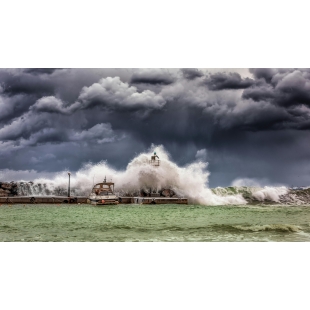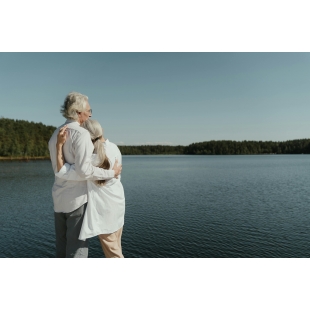US Tax information update
-

Tax Relief for Taxpayers Impacted by Severe Storms, Straight-Line Winds, Flooding, Landslides and Mudslides in the State of Washington
Tax professionals with clients in the State of Washington should be aware of a recent announcement by the Internal Revenue Service. The announcement provides tax relief for individuals and businesses in the State of Washington affected by severe storms, straight-line winds, flooding, landslides, and mudslides that began on Dec. 9, 2025. These taxpayers now have until May 1, 2026, to file various federal individual and business tax returns and make tax payments.
Following the disaster declaration issued by the Federal Emergency Management Agency (FEMA), individuals and households that reside or have a business in Benton, Chelan, Clallam, Grays Harbor, Jefferson, King, Kittitas, Lewis, Mason, Pierce, Samish, Skagit, Snohomish, Thurston, Wahkiakum, Whatcom, and Yakima counties qualify for tax relief. The declaration permits the IRS to postpone certain tax-filing and tax-payment deadlines for taxpayers who reside or have a business in the disaster area.
See the IRS announcement for further details, including the types of tax returns, payments and deposits eligible for tax relief.
Source: IRS.gov
US TAX, U.S. TAX
Tax Relief for Taxpayers Impacted by Severe Storms, Straight-Line Winds, Flooding, Landslides and Mudslides in the State of Washingtonmore -

2025 Nationwide Tax Forum Online: Partnerships and Non-resident Alien Withholding
One highlight of the IRS Nationwide Tax Forum Online (NTFO) is the seminar Partnerships and Non-resident Alien Withholding: Sections 1446(a) and 1446(f). This session explains what partnerships with a foreign partner need to know the withholding, reporting and other requirements. It also explains what partnerships should do when the foreign partner sells its interest in the partnership.
All NTFO self-study seminars cost $29 each. Tax pros can earn one continuing education credit for each NTFO self-study seminar or audit a presentation for free. For more information, visit irstaxforumonline.com.
Source: IRS.gov
US TAX, U.S. TAX
2025 Nationwide Tax Forum Online: Partnerships and Non-resident Alien Withholdingmore -

Draft Forms, Instructions and Publications Available on IRS.gov
The IRS continues to post early release versions of various tax forms and instructions to IRS.gov. Tax professionals can review the draft instructions for Form 1040 along with updated draft instructions for Form 1040 Schedule C, Schedule D, Schedule E, Schedule F and other schedules. Tax professionals can also find draft instructions for Form 941, Form 990, Form 1120, Form 1120-S and many others.
Tax professionals should not file draft forms and not rely on information in draft instructions or publications.
The IRS welcomes comments on tax products.
Source: IRS.gov
US TAX, U.S. TAX
Draft Forms, Instructions and Publications Available on IRS.govmore -

Guidance on the New Deduction for Car Loan Interest
The Department of the Treasury and the Internal Revenue Service provided guidance on the “No Tax on Car Loan Interest” provision enacted under the One, Big, Beautiful Bill.
The proposed regulations relate to a new deduction for interest paid on vehicle loans incurred after Dec. 31, 2024, to purchase new made-in-America vehicles for personal use. This new tax benefit applies to both taxpayers who take the standard deduction and those who itemize deductions.
To help tax professionals and their clients take advantage of this new tax benefit, the guidance addresses important eligibility criteria, including:
Providing rules relating to new vehicles eligible for the deduction, including for determining if the final assembly of a vehicle occurred in the United States;
Providing rules for determining which vehicle loans qualify and the amount of interest paid on a loan that may be deductible;
Providing rules for determining if a new vehicle is purchased for personal use; and
Identifying taxpayers who can take the deduction and clarifying the $10,000 annual deduction limit.
The IRS previously announced transition guidance for certain lenders and other taxpayers receiving interest for vehicle loans in 2025. In general, those persons must file information returns with the IRS to report interest received during the tax year and other information related to the loan. These information returns enable taxpayers to claim the benefits of the vehicle loan interest deduction. To help lenders implement these information reporting requirements, the proposed regulations clarify:
Which lenders and other interest recipients are required to report and the time and manner for this reporting; and
What information must be included on the form provided to the IRS and to taxpayers.
Treasury and the IRS invite comments from the public on these proposed regulations by Feb. 2, 2026. Tax professionals can submit comments through Regulations.gov. The proposed regulations include instructions for submitting comments.
For more information, see One, Big, Beautiful Bill provisions on IRS.gov.
Source: IRS.gov
US TAX, U.S. TAX
Guidance on the New Deduction for Car Loan Interestmore -

IRS sets 2026 business standard mileage rate at 72.5 cents per mile, up 2.5 cents
WASHINGTON — The Internal Revenue Service today announced that the optional standard mileage rate for business use of automobiles will increase by 2.5 cents in 2026, while the mileage rate for vehicles used for medical
purposes will decrease by half a cent, reflecting updated cost data and annual inflation adjustments.
Optional standard mileage rates are used to calculate the deductible costs of operating vehicles for business, charitable, and medical purposes. Additionally, the optional standard mileage rate may be used to calculate the deductible costs of operating vehicles for moving purposes for certain active-duty members of the Armed Forces, and now, under the One, Big, Beautiful Bill, certain members of the intelligence community.
Beginning Jan. 1, 2026, the standard mileage rates for the use of a car, van, pickup or panel truck will be:
72.5 cents per mile driven for business use, up 2.5 cents from 2025.
20.5 cents per mile driven for medical purposes, down a half cent from 2025.
20.5 cents per mile driven for moving purposes for certain active-duty members of the Armed Forces (and now certain members of the intelligence community), reduced by a half cent from last year.
14 cents per mile driven in service of charitable organizations, equal to the rate in 2025.
The rates apply to fully-electric and hybrid automobiles, as well as gasoline and diesel-powered vehicles.
While the mileage rate for charitable use is set by statute, the mileage rate for business use is based on an annual study of the fixed and variable costs of operating an automobile. The rate for medical and moving purposes, meanwhile, is based on only the variable costs from the annual study.
Under the law, taxpayers cannot claim a miscellaneous itemized deduction for unreimbursed employee travel expenses, except for certain educator expenses. However, deductions for expenses that are deductible in determining adjusted gross income remain allowable, such as for certain members of a reserve component of the Armed Forces, certain state and local government officials, certain performing artists, and eligible educators. Alternatively, eligible educators may claim an itemized deduction for certain unreimbursed employee travel expenses. In addition, only taxpayers who are members of the military on active duty or certain members of the intelligence community may claim a deduction for moving expenses incurred while relocating under orders to a permanent change of station.
Use of the standard mileage rates is optional. Taxpayers may instead choose to calculate the actual costs of using their vehicle.
Taxpayers using the standard mileage rate for a vehicle they own and use for business must choose to use the rate in the first year the automobile is available for business use. Then, in later years, they can choose to use the standard mileage rate or actual expenses.
For a leased vehicle, taxpayers using the standard mileage rate must employ that method for the entire lease period, including renewals.
Notice-2026-10 contains the optional 2026 standard mileage rates, as well as the maximum automobile cost used to calculate mileage reimbursement allowances under a fixed-and variable rate plan. The notice also provides the maximum fair market value of employer-provided automobiles first made available to employees for personal use in 2026 for which employers may calculate mileage allowances using a cents-per-mile valuation rule or the fleet-average-valuation rule.
Source: IRS.gov
US TAX, U.S. TAX
IRS sets 2026 business standard mileage rate at 72.5 cents per mile, up 2.5 centsmore -

Outreach Connection FY26-01
In this edition
The IRS is providing implementation guidance on the One, Big, Beautiful Bill. Below are the expansions and changes to deductions affecting taxpayers as they prepare for the filing season.
Car Loan Interest
Key takeaways about this deduction:
Effective 2025 through 2028
Up to $10,000 per year for interest on qualified new vehicle loans
Phase-out begins at modified adjusted gross income of:
$100,000 for single filers
$200,000 for joint filers
Standard Desuction Increases
The standard deduction increases for tax year 2026, to:
$32,200 for married couples filing jointly
$16,100 for single filers and married individuals filing separately
$24,150 for heads of household
Deduction for Seniors
Key takeaways about this deduction:
Additional $6,000 per taxpayer aged 65 or older
$12,000 if both spouses qualify
Phase-out begins at modified adjusted gross income of:
$75,000 for single filers
$150,000 for joint filers
No Tax on Overtime
Key takeaways about this deduction:
It applies only to the overtime premium portion of wages
Modified adjusted gross income caps annually at:
$12,500 for single filers
$25,000 for joint filers
No Tax on Tips
Key takeaways on tips deduction for tax year 2026:
Up to $25,000 of qualified tip income is deductible
Phase-out begins at modified adjusted gross income of:
$150,000 for single filers
$300,000 for joint filers
Source: IRS.gov
US TAX, U.S. TAX
Outreach Connection FY26-01more -

Practitioners Have Multiple Options for Submitting Powers of Attorney and Tax Information Authorizations
IN GENERAL
Under the Taxpayer Bill of Rights, all taxpayers have the right to representation before the IRS by a representative of their choice. See Publication 1 (Rev. 9-2017), Your Rights as a Taxpayer. Taxpayers are also entitled by Internal Revenue Code (IRC) 6103(c) to designate another person to receive or inspect the taxpayer’s tax returns or “return information” (as defined in the statute) by making a request to the IRS for, or a consent to, the disclosure to the person. The IRS, however, must withhold any return information when the agency determines that disclosure of the information would seriously impair federal tax administration. See IRC 6103(e)(7).
NECESSARY AUTHORIZATIONS, THEIR TYPES, AND METHODS OF SUBMISSION
Overview of Authorizations
A. Before an eligible tax practitioner can represent and act on behalf of a taxpayer before the IRS, the practitioner must file a Form 2848, Power of Attorney and Declaration of Representative, with the agency, or an equivalent power of attorney. See section 601.504(a) of the Statement of Procedural Rules (describing the “[s]ituations in which a power of attorney is required”). A valid authorization is needed, accompanied by a declaration of representative as described in Procedural Rule 601.502(c). When properly completed, Form 2848 includes all necessary elements. Proc. R. 601.503(b)(1). The necessary elements are listed in section 601.503(a)(1)-(6). By signing a Form 2848, a taxpayer authorizes the “representative(s) to receive and inspect my confidential tax information and to perform acts I can perform with respect to the tax matters described . . . .” (Line 3). In Part II of the form, Declaration of Representative, the representative attests to their eligibility to represent the taxpayer(s) identified in Part I of the form and the representative’s designation (a thru r). Most representative are attorneys, certified public accounts (CPAs), and enrolled agents (EAs) (designations a, b, and c, respectively). These professionals are “practitioners” under Treasury Circular No. 230, Regulations Governing Practice before the Internal Revenue Service (31 CFR Subtitle A, Part 10).
A “practitioner” is defined in Circular 230 section 10.2(a)(5), in conjunction with sections 10.3(a)-(e) and 10.2(a)(1), (a)(2). Besides the three already mentioned, practitioners include enrolled retirement plan agents (ERPAs) (designation r) and enrolled actuaries (designation e). Tax return preparers granted limited practice privileges under the IRS's voluntary Annual Filing Season Program (AFSP) can act as representatives (designation h, “Unenrolled Return Preparer”) in examinations of tax returns that the preparer prepared and signed.
B. In addition to submitting a Form 2848, a practitioner (or other tax professional) can submit a more limited authorization request, namely, Form 8821, Tax Information Authorization (TIA), which can be used to designate any third party to receive and inspect account information for the tax matter(s) and tax year(s) specified. IRM 21.3.7.5(2) (09-08-2016). A Form 8821 or other TIA operates, under IRC 6103(c), as a written request for or consent to disclosure of a taxpayer’s confidential tax information to a person that the taxpayer designates. 26 CFR 601.501(b)(15) (defining a tax information authorization as a “document signed by the taxpayer authorizing any individual or entity (e.g., corporation, partnership, trust, or organization) designated by the taxpayer to receive and/or inspect confidential tax information in a specified matter). As mentioned, section 6103(c) authorizes disclosure, subject to requirements and conditions prescribed by regulations, of a taxpayer’s return or “return information” to the “person or persons as the taxpayer may designate[,]” unless federal tax administration would be seriously impaired.
Unlike a Form 2848 representative, the designee on a Form 8821 need not be an attorney, CPA, IRS enrolled practitioner, or AFSP participant. But more significantly, a Form 8821 or other TIA does not authorize a designee to:
speak on the taxpayer’s behalf, other than appear as a witness for the taxpayer or to provide information to the IRS, typically in response to a request for the information (Circular 230 section 10.8(b); 26 CFR 601.501(b)(13));
execute a request to allow disclosure of returns or return information to another third party;
advocate the taxpayer’s position regarding federal tax laws;
execute waivers, consents, or closing agreements; or
represent the taxpayer in any other manner before the IRS.
C. Adequately completed authorizations specify the tax periods, taxes (income, employment, excise, etc.), and tax forms, as applicable, to which they relate. And, upon receipt by the IRS, the authorizations are recorded on the Central Authorization File (CAF), which is the IRS’s “computerized system of records which houses authorization information from both powers of attorney and tax information authorizations” and “contains several types of records, among them taxpayer and representative’s records, tax modules and authorizations.” IRM 21.3.7.1.1(1) (03-15-2023).
To enhance taxpayer confidentiality and to facilitate interaction between practitioners and IRS personnel, each practitioner (or other filer) is assigned a nine-digit CAF number when they file their first authorization with the IRS. CAF numbers differ from a tax practitioner’s or other tax professional’s preparer tax identification number (PTIN). Once they’ve been assigned their CAF number, the holder of the number should use it on all future Forms 2848 and 8821 that they file.
Providing Authorizations to the IRS
Traditional Submission/Filing
Historically, tax professionals were obliged to use an all-paper process for filing authorizations, sending hand-signed Forms 2848 by mail or fax. These forms were generally sent to the appropriate CAF Unit for processing. The CAF Unit then manually entered the information from the form into the CAF system. Currently, tax professionals can continue to use this all-paper process to file authorizations. The Instructions to Form 2848 list the submission mailing addresses and fax numbers, which depend on the taxpayer’s location. Alternatively, a practitioner could, and still can, choose to transmit or deliver a Form 2848 directly to an IRS employee handling the matter(s) that are subject of the practitioner’s representation (for example, a Revenue Agent (who’s assigned to the represented taxpayer’s examination), Revenue Officer, Appeals Officer, or other IRS personnel) instead of the CAF Unit.
Options Expanded Following the Taxpayer First Act
In response to the Taxpayer First Act of 2019 (Pub. L. No. 116-25), in January 2021, the IRS established uniform standards and procedures for the acceptance of taxpayers’ electronic signatures, by expanding the submission options for Forms 2848 and 8821 through the use of the Taxpayer Digital Communication (TDC) Secure Messaging portal available on IRS.gov: Submit Forms 2848 and 8821 Online. In conjunction with the creation of the TDC portal submission option, the IRS adopted rules for using electronic signatures on these forms. Currently, the portal is the only allowable method for filing Forms 2848 and 8821 bearing electronic signatures.
In July 2021 the IRS subsequently further expanded the online submission options through the launch of Tax Pro Account, which allows tax professionals to complete, electronically sign, and submit power-of-attorney and TIA requests to their individual clients’ online accounts (which are necessary to use Tax Pro Account) where the taxpayers can review and electronically approve (and execute) or reject the requests. Tax Pro Account is directly integrated with the CAF to allow real-time processing of authorizations. Most authorizations are active immediately because the system is fully automated, reducing the time required for tax professionals to obtain access to the information they need to represent or otherwise provide services to taxpayers.
Current State
In sum, at present, practitioners have several options to submit authorizations to the IRS to formalize their representation of a client before the IRS or obtain access (as a disclosure designee) to a client’s tax information to assist the client Practitioners can use:
the legacy process (fax/mail);
the online submission portal; or
the Tax Pro Account.
Both the online portal and Tax Pro Account utilize the modernized IRS digital identity platform and align with requirements outlined in IRM 10.10.1, IRS Electronic Signature (e-Signature) Program.
CONCLUSION
A practitioner’s options for submitting authorization requests are summarized below. The time required to process paper forms and the limitations on the acceptance of faxed forms, unless they contain the taxpayer’s handwritten (wet) signature, underscore the value and efficiency of the online portal and Tax Pro Account. Moreover, because forms submitted through the online portal are processed by CAF Unit personnel on a first-in, first-out basis (along with faxed and mailed forms), Tax Pro Account’s real-time processing of authorizations, on the other hand, will make it the preferable option when time is of the essence.
- Use Tax Pro Account
Submit authorization request to taxpayer's online account.
♦ All-digital submission
♦ Online identity verification and authentication*
♦ Real-time processing
Use for —
♦ Individual taxpayer with online account ONLY **
Note—
♦ Limited tax matters and periods
♦ Prior authorizations revoked for same tax matters or periods
* See IRM 21.2.1.58 (11-25-2024), “Secure Access Digital Identity (SADI)”
** At the time of this publication. Check Tax Pro Account website for current capabilities.
- Submit Forms Online
Submit Forms 2848 and 8821 online to the IRS.
♦ Secure form upload
♦ Electronic or handwritten signature acceptable*
♦ First-in, first-out processing
Use for —
♦ Individual or business taxpayer
♦ Any tax matter or period
Note—
♦ Prior authorizations can be retained or revoked
* If taxpayer electronically signs in a remote transaction (i.e., taxpayer and practitioner are at separate locations at time of signing), taxpayer’s identity must be authenticated.
- Fax or Mail Forms
If you can’t use an online option, you can fax or mail authorization forms to the IRS.
♦ Paper forms by fax or mail
♦ Handwritten signature only
♦ First-in, first-out processing
Use for—
♦ Individual or business taxpayer
♦ Any tax matter or period
Note—
♦ Prior authorizations can be retained or revoked
Source: IRS.gov
US TAX, U.S. TAX
Practitioners Have Multiple Options for Submitting Powers of Attorney and Tax Information Authorizationsmore -

401(k) limit increases to $24,500 for 2026, IRA limit increases to $7,500
WASHINGTON — The Internal Revenue Service announced today that the amount individuals can contribute to their 401(k) plans in 2026 has increased to $24,500, up from $23,500 for 2025.
The IRS today also issued technical guidance regarding all cost‑of‑living adjustments affecting dollar limitations for pension plans and other retirement-related items for tax year 2026 in Notice 2025-67, posted today on IRS.gov.
Highlights of changes for 2026
The annual contribution limit for employees who participate in 401(k), 403(b), governmental 457 plans, and the federal government’s Thrift Savings Plan is increased to $24,500, up from $23,500 for 2025.
The limit on annual contributions to an IRA is increased to $7,500 from $7,000. The IRA catch‑up contribution limit for individuals aged 50 and over was amended under the SECURE 2.0 Act of 2022 (SECURE 2.0) to include an annual cost‑of‑living adjustment is increased to $1,100, up from $1,000 for 2025.
The catch-up contribution limit that generally applies for employees aged 50 and over who participate in most 401(k), 403(b), governmental 457 plans, and the federal government’s Thrift Savings Plan is increased to $8,000, up from $7,500 for 2025. Therefore, participants in most 401(k), 403(b), governmental 457 plans and the federal government’s Thrift Savings Plan who are 50 and older generally can contribute up to $32,500 each year, starting in 2026. Under a change made in SECURE 2.0, a higher catch-up contribution limit applies for employees aged 60, 61, 62 and 63 who participate in these plans. For 2026, this higher catch-up contribution limit remains $11,250 instead of the $8,000 noted above.
The income ranges for determining eligibility to make deductible contributions to traditional Individual Retirement Arrangements (IRAs), to contribute to Roth IRAs and to claim the Saver’s Credit all increased for 2026.
Taxpayers can deduct contributions to a traditional IRA if they meet certain conditions. If during the year either the taxpayer or the taxpayer’s spouse was covered by a retirement plan at work, the deduction may be reduced, or phased out, until it is eliminated, depending on filing status and income. (If neither the taxpayer nor the spouse is covered by a retirement plan at work, the phase-outs of the deduction do not apply.) Here are the phase‑out ranges for 2026:
For single taxpayers covered by a workplace retirement plan, the phase-out range is increased to between $81,000 and $91,000, up from between $79,000 and $89,000 for 2025.
For married couples filing jointly, if the spouse making the IRA contribution is covered by a workplace retirement plan, the phase-out range is increased to between $129,000 and $149,000, up from between $126,000 and $146,000 for 2025.
For an IRA contributor who is not covered by a workplace retirement plan and is married to someone who is covered, the phase-out range is increased to between $242,000 and $252,000, up from between $236,000 and $246,000 for 2025.
For a married individual filing a separate return who is covered by a workplace retirement plan, the phase-out range is not subject to an annual cost-of-living adjustment and remains between $0 and $10,000.
Other phase-out ranges and limitations
The notice also provides limitations for 2026 for Roth IRAs, the Saver’s Credit and SIMPLE retirement accounts.
The income phase-out range for taxpayers making contributions to a Roth IRA is increased to between $153,000 and $168,000 for singles and heads of household, up from between $150,000 and $165,000 for 2025. For married couples filing jointly, the income phase-out range is increased to between $242,000 and $252,000, up from between $236,000 and $246,000 for 2025. The phase-out range for a married individual filing a separate return who makes contributions to a Roth IRA is not subject to an annual cost-of-living adjustment and remains between $0 and $10,000.
The income limit for the Saver’s Credit (also known as the Retirement Savings Contributions Credit) for low- and moderate-income workers is $80,500 for married couples filing jointly, up from $79,000 for 2025; $60,375 for heads of household, up from $59,250 for 2025; and $40,250 for singles and married individuals filing separately, up from $39,500 for 2025.
The amount individuals can generally contribute to their SIMPLE retirement accounts is increased to $17,000, up from $16,500 for 2025. Pursuant to a change made in SECURE 2.0, individuals can contribute a higher amount to certain applicable SIMPLE retirement accounts. For 2026, this higher amount is increased to $18,100, up from $17,600 for 2025.
The catch-up contribution limit that generally applies for employees aged 50 and over who participate in most SIMPLE plans is increased to $4,000, up from $3,500 for 2025. Under a change made in SECURE 2.0, a different catch-up limit applies for employees aged 50 and over who participate in certain applicable SIMPLE plans, which remains $3,850. Under a change made in SECURE 2.0, a higher catch-up contribution limit applies for employees aged 60, 61, 62 and 63 who participate in SIMPLE plans, which remains $5,250.
Source: IRS.gov
US TAX, U.S. TAX
401(k) limit increases to $24,500 for 2026, IRA limit increases to $7,500more -

Important reminders related to the termination of the Clean Vehicle Credits
The One, Big, Beautiful Bill (OBBB) (Public Law 119-21, 139 Stat. 72 (July 4, 2025)), accelerated the termination of the Clean Vehicle Credit, sections 30D, 25E, and 45W.
On August 21, 2025, IRS issued frequently asked questions (FAQs) in Fact Sheet 2025-05 relating to the modification of sections 25C, 25D, 25E, 30C, 30D, 45L, 45W, and 179D under OBBB.
Key points in the FAQs include:
New user registrations for the Clean Vehicle Credit program, through the Energy Credits Online (ECO) portal, closed on September 30, 2025.
The ECO portal will remain open beyond September 30, 2025, for limited usage by previously registered users to submit time of sale reports and updates to such reports, such as when there has been a returned vehicle.
When submitting time of sale reports, they should submit supporting documents such as the complete vehicle deal jacket and any documents pertaining to the clean vehicle credit, which may expedite the review process.
Important reminders for repayments – IRS reissuing Pay.gov invoices for unpaid advance payments for vehicle returns or cancellations:
When a dealer submits a return or cancels a time of sale report, they must repay the advance payment of the credit received at the original time of sale.
Pay.gov electronically sends an invoice and access code to the email address associated with the dealer’s advance payment registration. Payment will not be automatically debited.
When the invoice is received, the dealer should promptly repay the advance payment within 30 days of receipt of the invoice.
Advance payments for new time of sale report submissions will only be paid out for that vehicle after the dealer first repays the IRS any advance payment for a returned or cancelled time of sale report.
If a dealer is unable to locate the email containing the invoice and access code, please contact the IRS at irs.clean.vehicles.dealer.info@irs.gov to request a new one.
For more information on the expiration of the clean vehicle credits, please see Fact Sheet 2025-05.
Source: IRS.gov
US TAX, U.S. TAX
Important reminders related to the termination of the Clean Vehicle Creditsmore -

Individual retirement accounts offer benefits now and in the future
Planning for retirement may seem daunting, but it’s important to start early. Individual retirement accounts provide tax incentives for people to make investments towards their financial future.
IRAs let earnings grow tax deferred. Individuals pay taxes on investment gains only when they make withdrawals. Depositors may be able to claim a deduction on their individual federal income tax return for the amount they contributed to an IRA.
Here are some highlights for the many types of IRAs:
Traditional IRA
Most common type of IRA and generally, the money in a traditional IRA isn't taxed until it's withdrawn.
There are annual limits to contributions depending on the person's age and the type of IRA.
When planning when to withdraw money from an IRA, taxpayers should know:
They may face a 10% penalty and a tax bill if they withdraw money before age 59½, unless they qualify for an exception
Usually, they must start taking withdrawals from the IRA when they reach age 73, age 72 if they turned 72 in 2022. For tax years 2019 and earlier, that age was 70½
Special distribution rules apply for IRA beneficiaries.
Roth IRA
Same rules as a traditional IRA, but there are differences:
Contributions are made with after-tax funds, and a taxpayer can't deduct contributions to a Roth IRA.
Qualified distributions are tax free.
Don't require withdrawals until after the death of the owner.
Other types of IRAs
Simplified employee pension – A SEP IRA is set up by an employer. The employer makes contributions directly to an IRA set up for each employee.
Savings incentive match plan for employees – A SIMPLE IRA allows the employer and employees to contribute to an IRA set up for each employee. It is suited as a start-up retirement savings plan for small employers not currently sponsoring a retirement plan.
Payroll deduction IRA – Employees set up a traditional or a Roth IRA with a financial institution and authorize a payroll deduction agreement with their employer.
Source: IRS.gov
US TAX, U.S. TAX
Individual retirement accounts offer benefits now and in the futuremore -

One Big Beautiful Bill Act: Tax deductions for working Americans and seniors
Note: This Fact Sheet has been updated July 25 by adding to the section on “No Tax on Car Loan Interest” new language describing the requirement for “Final assembly in the United States.”
Below are descriptions of new provisions from the One Big Beautiful Bill Act, signed into law on July 4, 2025, as Public Law 119-21, that go into effect for 2025.
New deduction: Effective for 2025 through 2028, employees and self-employed individuals may deduct qualified tips received in occupations that are listed by the IRS as customarily and regularly receiving tips on or before December 31, 2024, and that are reported on a Form W-2, Form 1099, or other specified statement furnished to the individual or reported directly by the individual on Form 4137.
“Qualified tips” are voluntary cash or charged tips received from customers or through tip sharing.
Maximum annual deduction is $25,000; for self-employed, deduction may not exceed individual’s net income (without regard to this deduction) from the trade or business in which the tips were earned.
Deduction phases out for taxpayers with modified adjusted gross income over $150,000 ($300,000 for joint filers).
Taxpayer eligibility: Deduction is available for both itemizing and non-itemizing taxpayers.
Self-employed individuals in a Specified Service Trade or Business (SSTB) under section 199A are not eligible. Employees whose employer is in an SSTB also are not eligible.
Taxpayers must:
include their Social Security Number on the return and
file jointly if married, to claim the deduction.
Reporting: Employers and other payors must file information returns with the IRS (or SSA) and furnish statements to taxpayers showing certain cash tips received and the occupation of the tip recipient.
Guidance: By October 2, 2025, the IRS must publish a list of occupations that “customarily and regularly” received tips on or before December 31, 2024.
The IRS will provide transition relief for tax year 2025 for taxpayers claiming the deduction and for employers and payors subject to the new reporting requirements.
“No Tax on Overtime”
New deduction: Effective for 2025 through 2028, individuals who receive qualified overtime compensation may deduct the pay that exceeds their regular rate of pay – such as the “half” portion of “time-and-a-half” compensation -- that is required by the Fair Labor Standards Act (FLSA) and that is reported on a Form W-2, Form 1099, or other specified statement furnished to the individual.
Maximum annual deduction is $12,500 ($25,000 for joint filers).
Deduction phases out for taxpayers with modified adjusted gross income over $150,000 ($300,000 for joint filers).
Taxpayer eligibility: Deduction is available for both itemizing and non-itemizing taxpayers.
Taxpayers must:
include their Social Security Number on the return and
file jointly if married, to claim the deduction.
Reporting: Employers and other payors are required to file information returns with the IRS (or SSA) and furnish statements to taxpayers showing the total amount of qualified overtime compensation paid during the year.
Guidance: The IRS will provide transition relief for tax year 2025 for taxpayers claiming the deduction and for employers and other payors subject to the new reporting requirements.
“No Tax on Car Loan Interest”
New deduction: Effective for 2025 through 2028, individuals may deduct interest paid on a loan used to purchase a qualified vehicle, provided the vehicle is purchased for personal use and meets other eligibility criteria. (Lease payments do not qualify.)
Maximum annual deduction is $10,000.
Deduction phases out for taxpayers with modified adjusted gross income over $100,000 ($200,000 for joint filers).
Qualified interest: To qualify for the deduction, the interest must be paid on a loan that is:
originated after December 31, 2024,
used to purchase a vehicle, the original use of which starts with the taxpayer (used vehicles do not qualify),
for a personal use vehicle (not for business or commercial use) and
secured by a lien on the vehicle.
If a qualifying vehicle loan is later refinanced, interest paid on the refinanced amount is generally eligible for the deduction.
Qualified vehicle: A qualified vehicle is a car, minivan, van, SUV, pick-up truck or motorcycle, with a gross vehicle weight rating of less than 14,000 pounds, and that has undergone final assembly in the United States.
Final assembly in the United States: The location of final assembly will be listed on the vehicle information label attached to each vehicle on a dealer's premises. Alternatively, taxpayers may rely on the vehicle’s plant of manufacture as reported in the vehicle identification number (VIN) to determine whether a vehicle has undergone final assembly in the United States.
The VIN Decoder website for the National Highway Traffic Safety Administration (NHTSA) provides plant of manufacture information. Taxpayers can follow the instructions on that website to determine if the vehicle’s plant of manufacture was located in the United States.
Taxpayer eligibility: Deduction is available for both itemizing and non-itemizing taxpayers.
The taxpayer must include the Vehicle Identification Number (VIN) of the qualified vehicle on the tax return for any year in which the deduction is claimed.
Reporting: Lenders or other recipients of qualified interest must file information returns with the IRS and furnish statements to taxpayers showing the total amount of interest received during the taxable year.
Guidance: The IRS will provide transition relief for tax year 2025 for interest recipients subject to the new reporting requirements.
Deduction for Seniors
New deduction: Effective for 2025 through 2028, individuals who are age 65 and older may claim an additional deduction of $6,000. This new deduction is in addition to the current additional standard deduction for seniors under existing law.
The $6,000 senior deduction is per eligible individual (i.e., $12,000 total for a married couple where both spouses qualify).
Deduction phases out for taxpayers with modified adjusted gross income over $75,000 ($150,000 for joint filers).
Qualifying taxpayers: To qualify for the additional deduction, a taxpayer must attain age 65 on or before the last day of the taxable year.
Taxpayer eligibility: Deduction is available for both itemizing and non-itemizing taxpayers.
Taxpayers must:
include the Social Security Number of the qualifying individual(s) on the return, and
file jointly if married, to claim the deduction.
Source: IRS.gov
US TAX, U.S. TAX
One Big Beautiful Bill Act: Tax deductions for working Americans and seniorsmore -

IRS increases the standard mileage rate for business use in 2025; key rate increases 3 cents to 70 cents per mile
WASHINGTON — The Internal Revenue Service today announced that the optional standard mileage rate for automobiles driven for business will increase by 3 cents in 2025, while the mileage rates for vehicles used for other purposes will remain unchanged from 2024.
Optional standard milage rates are used to calculate the deductible costs of operating vehicles for business, charitable and medical purposes, as well as for active-duty members of the Armed Forces who are moving.
Beginning Jan. 1, 2025, the standard mileage rates for the use of a car, van, pickup or panel truck will be:
70 cents per mile driven for business use, up 3 cents from 2024.
21 cents per mile driven for medical purposes, the same as in 2024.
21 cents per mile driven for moving purposes for qualified active-duty members of the Armed Forces, unchanged from last year.
14 cents per mile driven in service of charitable organizations, equal to the rate in 2024.
The rates apply to fully-electric and hybrid automobiles, as well as gasoline and diesel-powered vehicles.
While the mileage rate for charitable use is set by statute, the mileage rate for business use is based on an annual study of the fixed and variable costs of operating an automobile. The rate for medical and moving purposes, meanwhile, is based on only the variable costs from the annual study.
Under the Tax Cuts and Jobs Act, taxpayers cannot claim a miscellaneous itemized deduction for unreimbursed employee travel expenses. And only taxpayers who are members of the military on active duty may claim a deduction for moving expenses incurred while relocating under orders to a permanent change of station.
Use of the standard mileage rates is optional. Taxpayers may instead choose to calculate the actual costs of using their vehicle.
Taxpayers using the standard mileage rate for a vehicle they own and use for business must choose to use the rate in the first year the automobile is available for business use. Then, in later years, they can choose to use the standard mileage rate or actual expenses.
For a leased vehicle, taxpayers using the standard mileage rate must employ that method for the entire lease period, including renewals.
Notice 2025-5 PDF contains the optional 2025 standard mileage rates, as well as the maximum automobile cost used to calculate mileage reimbursement allowances under a fixed-and variable rate (FAVR) plan. The notice also provides the maximum fair market value of employer-provided automobiles first made available to employees for personal use in 2025 for which employers may calculate mileage allowances using a cents-per-mile valuation rule or the fleet-average-valuation rule.
Source: IRS.gov
US TAX, U.S. TAX
IRS increases the standard mileage rate for business use in 2025; key rate increases 3 cents to 70 cents per milemore












